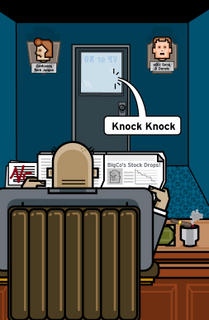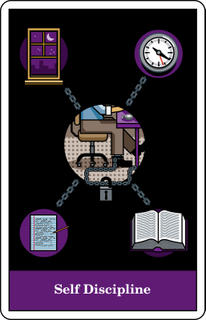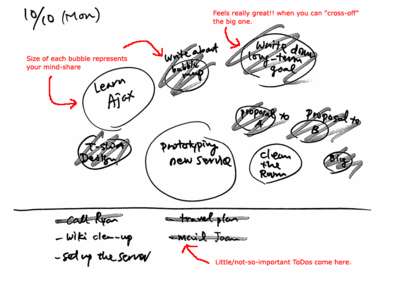
Do you have trouble saying no, even when you really should?
Do you feel like people walk all over you?
Do you have trouble keeping your temper under control?
If you answered yes to any of the above questions, you might find it really helpful to learn about assertive communication.
Here are some tips from a
University of Iowa handout on assertive communication by
Vivian Barnette, Ph.D.:
There are three parts of each assertive intervention:
1. empathy/validation: Try to say something that shows your understanding of the other person's feelings. This shows them that you're not trying to pick a fight, and it takes the wind out of their sails. For example, "I know that you get anxious when you're all ready to go and I'm not … ."
2. statement of problem: This piece describes your difficulty/dissatisfaction, tells why you need something to change. For example, "… but when you do that, I get all flustered and take even more time. By the time we get in the car, we're mad at each other and not much in the mood to have a good time."
3. statement of what you want: This is a specific request for a specific change in the other person's behavior. For example, "From now on, let's be sure we know what time we want to leave, and if you're ready before I am, will you please just go to another room and read the paper or watch TV?"
How to be effectively assertive:
Use assertive body language. Face the other person, stand or sit straight, don't use dismissive gestures, be sure you have a pleasant, but serious facial expression, keep your voice calm and soft, not whiney or abrasive.
Use "I" statements. Keep the focus on the problem you're having, not on accusing or blaming the other person. Example: "I'd like to be able to tell my stories without interruption." instead of "You're always interrupting my stories!"
Use facts, not judgments. Example: "Your punctuation needs work and your formatting is inconsistent" instead of "This is sloppy work." or "Did you know that shirt has some spots?" instead of "You're not going out looking like THAT, are you?"
Express ownership of your thoughts, feeling, and opinions. Example: "I get angry when he breaks his promises." instead of "He makes me angry." or "I believe the best policy is to…" instead of "The only sensible thing is to …"
Make clear, direct, requests. Don't invite the person to say no. Example: "Will you please ... ?" instead of "Would you mind … ?" or "Why don't you … ?"
Special techniques for difficult situations:
Broken record: Keep repeating your point, using a low level, pleasant voice. Don't get pulled into arguing or trying to explain yourself. This lets you ignore manipulation, baiting, and irrelevant logic. Example: You are taking something back to a store that you know gives refunds, but the clerk first questions your decision, tries to imply that there's something wrong with you because you changed your mind, tells you that she can only give a store credit, etc. Using the broken record, you walk into the store and say "I decided I don't need this and I'd like my money back." Then no matter what the clerk says, you keep repeating "I decided I don't need this and I'd like my money back." If she doesn't get it, simply ask to speak to a manager and say the same thing. Trust me, it works!
Fogging: This is a way to deflect negative, manipulative criticism. You agree with some of the facts, but retain the right to choose your behavior. Example: Mom: "Your skirt is awfully short, don't you think you should wear longer skirts? They're the style now." You: "You're right, skirts are longer now." Agree with as much of the facts as you want to, but don’t agree to change your skirt length. Fogging is great for avoiding fights and making people stop criticizing. With significant others, when you need to keep living together, it's best to quietly hear them out, then assertively give your response.
Content to Process Shift: This means that you stop talking about the problem and bring up, instead, how the other person is behaving RIGHT NOW. Use it when someone's not listening or trying to use humor or a distraction to avoid the issue. Example: "You're getting off the point. I'm starting to feel frustrated because I feel like you're not listening."
Defusing: Letting someone cool down before discussing an issue. Example: "I can see that you're upset, and I can even understand part of your reaction. Let's talk about this later." Also, if they try to stay with it, you always have the right to walk away.
Assertive inquiry/stop action: This is similar to the content to process shift. "Let's hold it for a minute, something isn't working, what just happened?, how did we get into this argument?" This helps to identify the real issue when the argument is actually about something bigger than the immediate topic.Example:
"Can you help me with this statistics problem?"
"Man, will you just get off my back? You know how much I have to do today!"
"Why is it such a problem to take 15 minutes to help me with this? You told me last night that you would!"
"I get so tired of you always asking me to do these things right when I'm in the middle of something!"
"Whoa, let's take a break here. How did we get from my stats problem to you being tired of my interruptions?"
The real problem is not the stats problem, it's timing. Now that topic is open for discussion and they're becoming aware of how their arguments escalate.
Summarization: This helps to make sure you're understanding the other person. Example: "So what you're trying to tell me is ... ."
Specificity: It's really important to be very clear about what you want done. This helps prevent distractions. Example: "The thing I really wish is that you'd pick your clothes up off the floor."
Here's more from
Assertiveness - Stress Management Techniques from Mind Tools:
LADDER describes a six-stage process for handling problems in an assertive way. These are:
L – Look at your rights and what you want, and understand your feelings about the situation
A – Arrange a meeting with the other person to discuss the situation
D – Define the problem specifically
D – Describe your feelings so that the other person fully understands how you feel about the situation
E – Express what you want clearly and concisely
R – Reinforce the other person by explaining the mutual benefits of adopting the site of action you are suggesting.
Keep in touch! Sign up to get updates and occasional emails from me.
 Visual thinking is the practice of using pictures (the viewing of pictures and the making of pictures) to enhance your ability to solve problems, think about complex issues and communicate effectively.
Visual thinking is the practice of using pictures (the viewing of pictures and the making of pictures) to enhance your ability to solve problems, think about complex issues and communicate effectively.

























 David Wiley
David Wiley
















 Jon Stewart of the Daily Show
Jon Stewart of the Daily Show